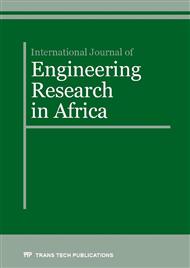[1]
K Lu, J Lu. Surface nanocrystallization of metallic material Presentation of the concept behind a new approach. Journal of Materials Science & Technology, 1999, 15(3): 193-197.
Google Scholar
[2]
K Lu, J Lu. Nanostructured surface layes on metallic materials induced by surface mechanical attrition treatment. Materials Science and Engineering, 2004, 375(1): 38-45.
DOI: 10.1016/j.msea.2003.10.261
Google Scholar
[3]
Liao Libao. Research on method and property of metal surface nanocrystallization. Doctorial degree thesis of East China University of Science and Technology,(2011).
Google Scholar
[4]
N. A. Prakash, R. Gnanamoorthy, M. Kamaraj. Surface nanocrystallization of aluminium alloy by controlled ball impact technique. Surface & Coatings Technology, 2012, 210(8): 78-89.
DOI: 10.1016/j.surfcoat.2012.08.069
Google Scholar
[5]
H. P. Klug, L. E. Alexander. X-ray diffraction procfor polycrystalline and amorphous materials. NewYork: John Wiley & Sons Wiley, 1974: 491-494.
Google Scholar
[6]
D. Jia, L. Q. Hu. Study on Nano-crystallization Technology and Its Mechanism of A1-lloy Surface. Material and Heat Treatment. 2012, 41(8): 144-146.
Google Scholar
[7]
T. X. Zou. Iinvestigation on Grain Refinement Mechanism and Dynamic Mechanical Properties of Pure Aluminum. Tai Yuan University of Technology (China), 2008, 60-61.
Google Scholar
[8]
N. R. Tao, Z. B. Wang, W. P. Tong, et al. An investigation of surface nanocrystallization mechanism in Fe induced by surface mechanical attrition treatment. Acta Materialia. 2002, 50(18): 4603-4616.
DOI: 10.1016/s1359-6454(02)00310-5
Google Scholar
[9]
M. Cheng, D. Zhang, H. Chen, et al. Surface nanocrystallization and its effect on fatigue performance of high-strength materials treated by ultrasonic rolling process. International Journal of Advanced Manufacturing Technology. 2016, 83(1): 123-131.
DOI: 10.1007/s00170-015-7485-4
Google Scholar
[10]
H. Q. Ye, X. M. Fan. Surface nanocrystallization of 7A04 aluminum alloy induced by circulation rolling plastic deformation. Trans Nonferrous Met SOC China, 2006, 16(6): 656-660.
DOI: 10.1016/s1003-6326(06)60272-0
Google Scholar
[11]
L. L. Ge, Z. W. Yuan, X. T. Jing, Z. X. Lu. Study of Pure Titanium (TA2) Surface Nanocrystallization and Its Thermal Stablity. Rare Metal Materials and Engineering, 2011, 40(7): 1239-1242.
Google Scholar
[12]
K. Y. Zhu, A. Vassel, F. Brisset, et al. Nanostructure formation mechanism of a-titanium using SMAT. Acta Mater, 2004, 52(14): 4101-4110.
DOI: 10.1016/j.actamat.2004.05.023
Google Scholar
[13]
Y. Sun, R. Baliley. Improvement in tribocorrosion behavior of 304 stainless steel by surface mechanical attrition treatment. Surf Coat Technol, 2014, 253(9): 284-291.
DOI: 10.1016/j.surfcoat.2014.05.057
Google Scholar
[14]
S. Jelliti, C. Richard, D. Retraint, et al. Effect of surface nanocrystallization on the corrosion behavior of Ti–6Al–4V titanium alloy. Surface & Coatings Technology, 2013, 224(7): 82-87.
DOI: 10.1016/j.surfcoat.2013.02.052
Google Scholar


